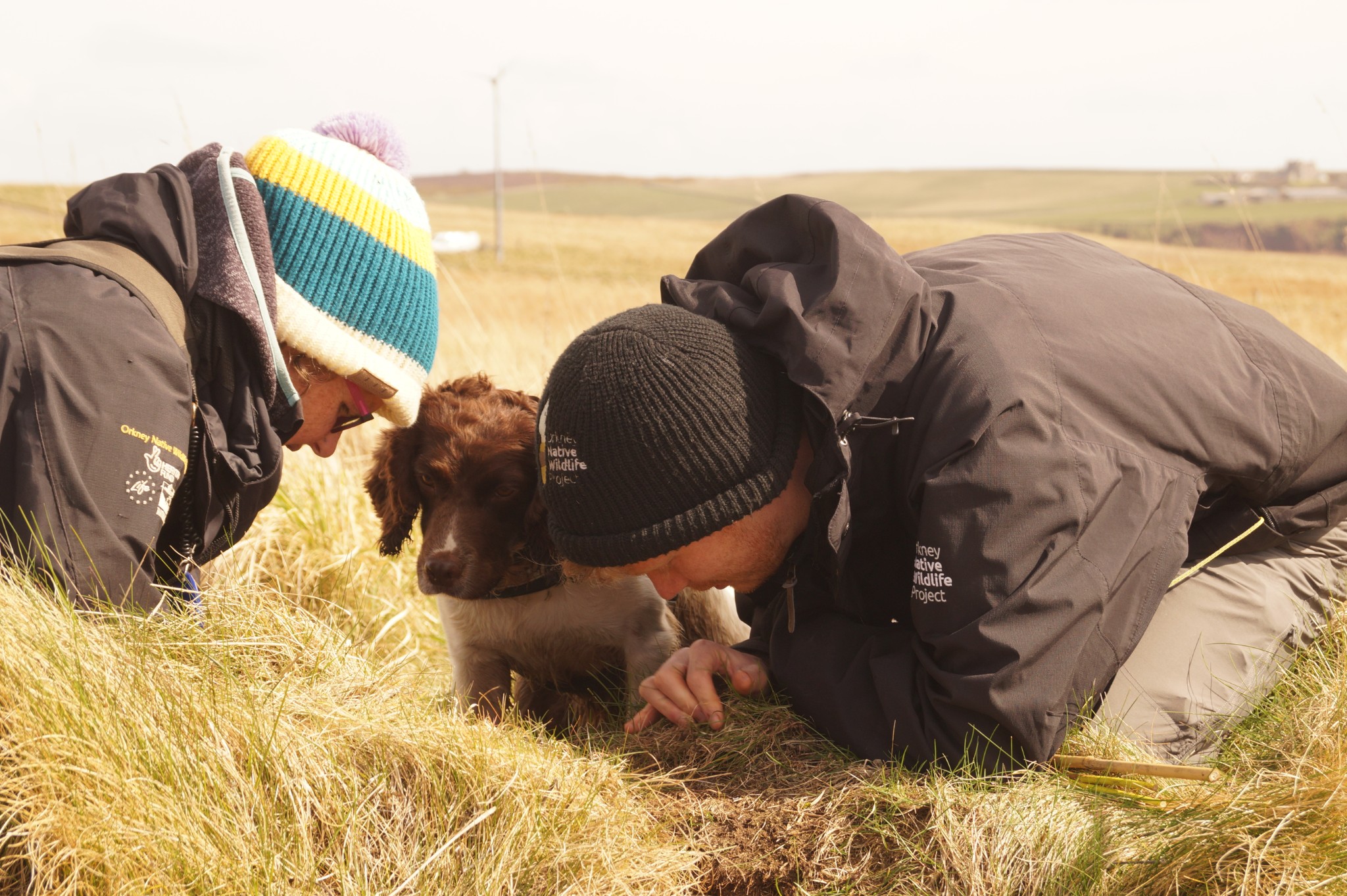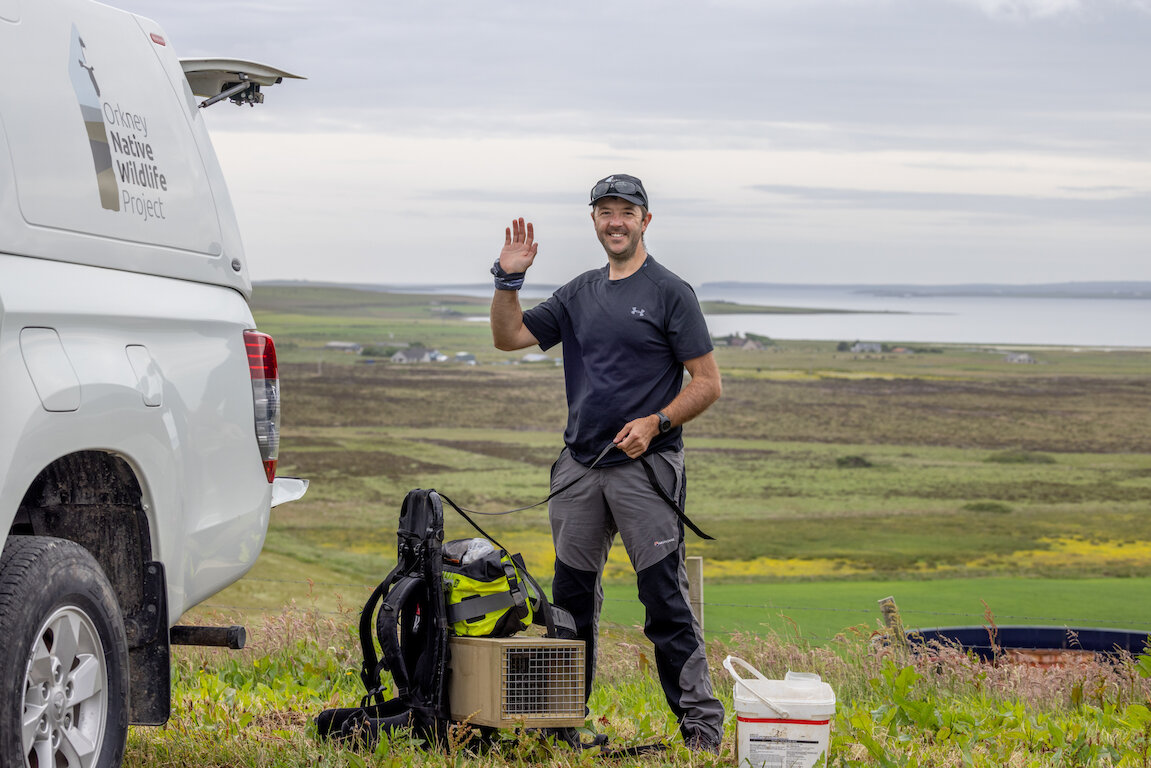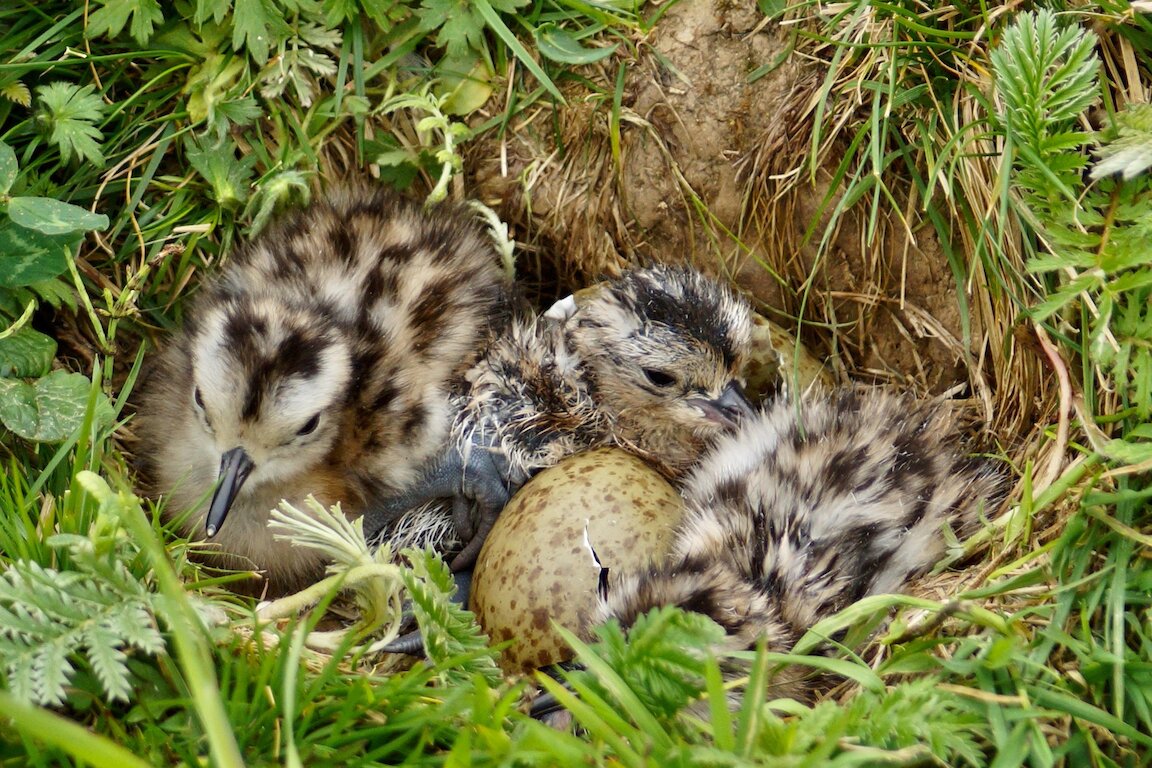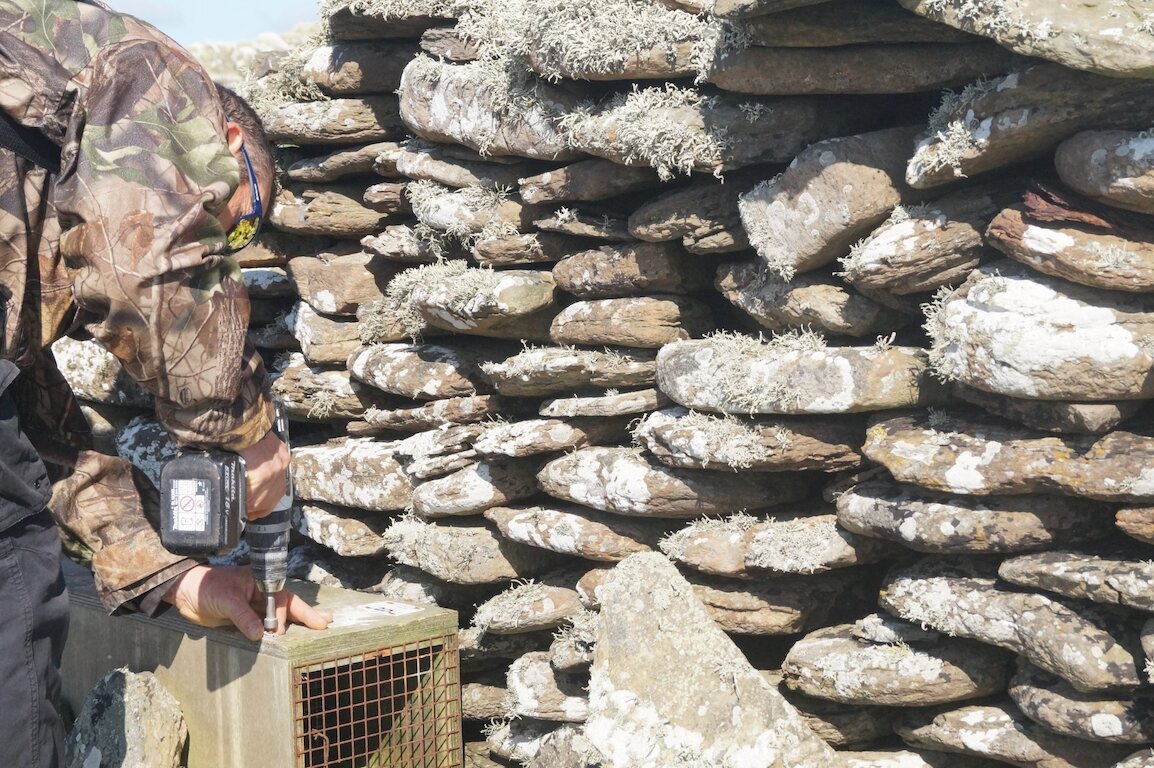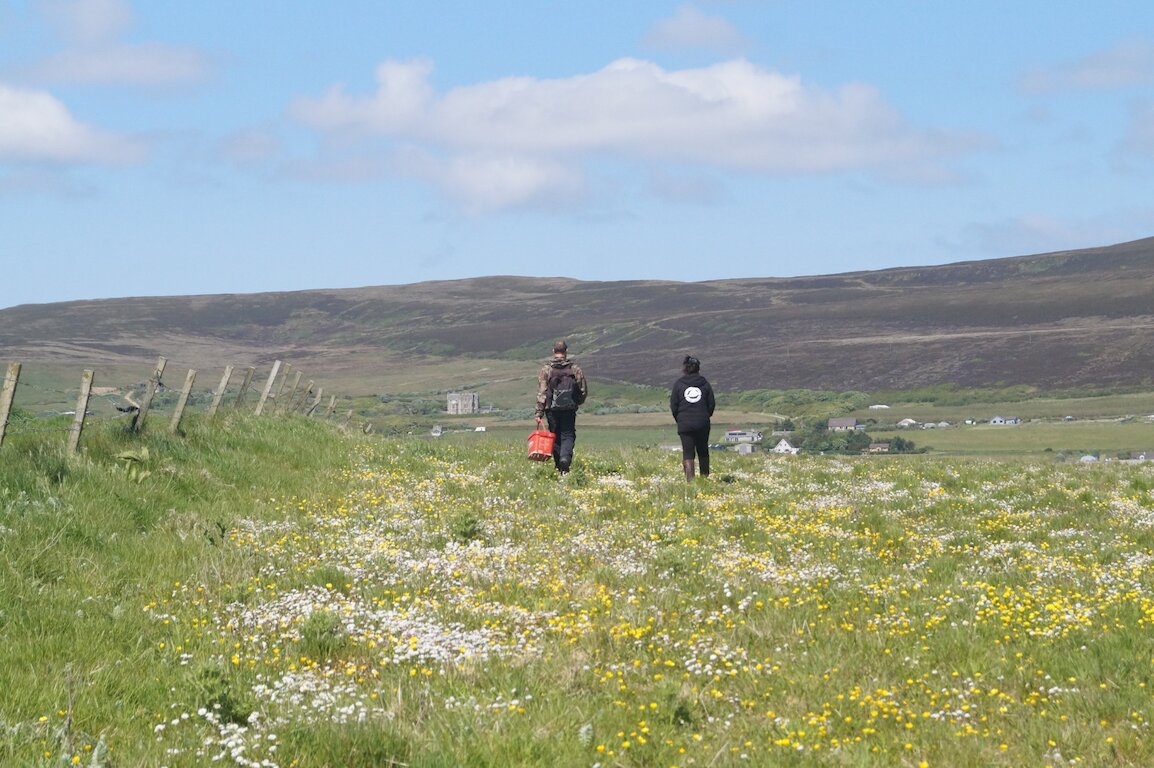With a network of over 8,000 lethal humane trap boxes, Europe’s first stoat detection dogs, a team of professional trappers, and the support of local volunteers, the project has removed over 6,000 stoats from Orkney since 2019.
As of 2024, this progress has propelled the project into a new phase of the eradication. After trialling ‘response trapping’ across East Mainland and the Linked Isles, this method is now being applied across the whole of the eradication area.
Response trapping means responding to stoat sightings and dog detections with targeted trapping. Such an approach would simply not have been possible when stoat numbers were higher. Thanks to the success of the conventional trap network, the project is now able to respond everywhere, preparing the ground for the final phase of the eradication.
To date, stoats have been prevented from colonising any more of the Orkney Islands. This vital achievement is in part due to the project’s extensive biosecurity programme. The biosecurity team has responded to more than 50 possible sightings since in the project began, and been able to confirm that stoats are not present in all instances with the help of the stoat detection dogs.
Furthermore, the high-risk islands of Hoy, Rousay, and Shapinsay now have biosecurity hubs stocked with equipment and manned by volunteers who know how to use it in the event of a possible stoat sighting on their island. This local knowledge, combined with the project’s resources and expertise, means the islands are well protected against stoat incursions.



